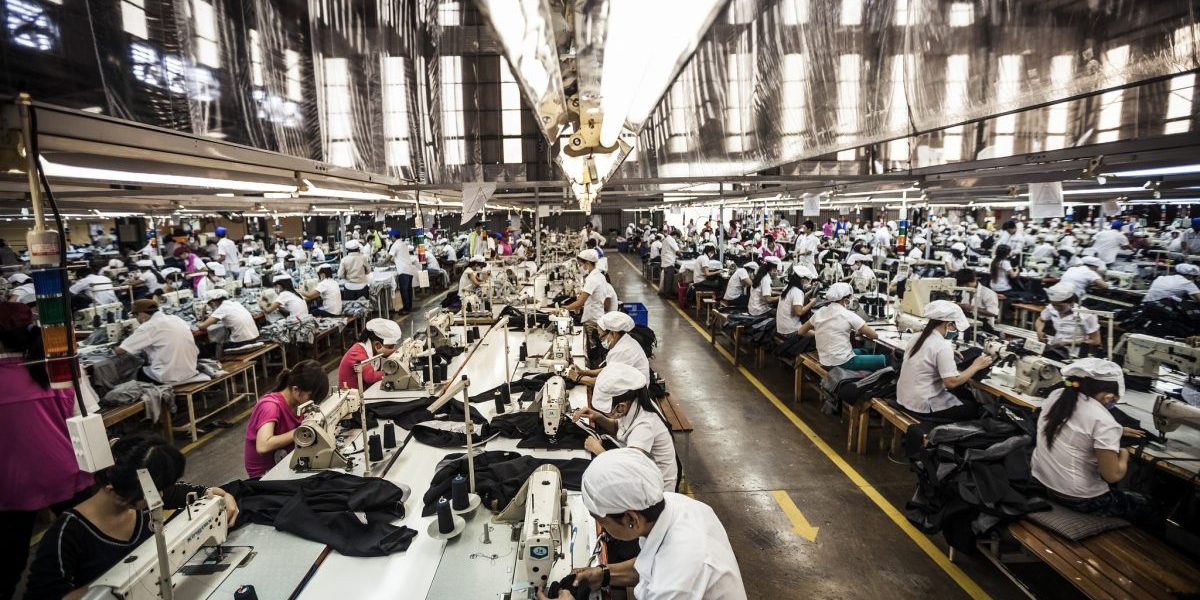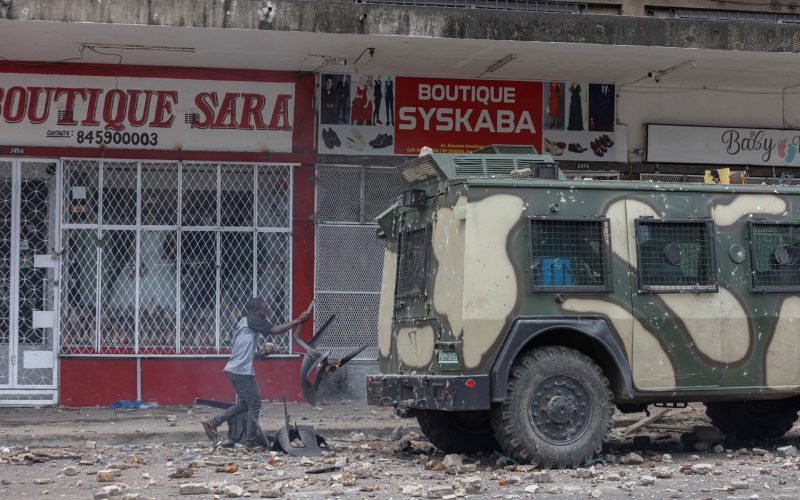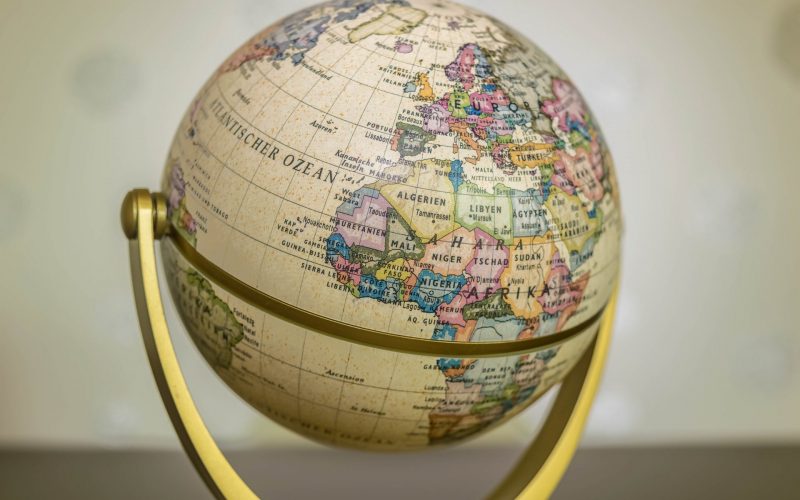Gershman is the managing director of a sprawling high-end textile mill on the eastern side of Johannesburg. The undergarments are from China. They retail for $1 – a price that includes the attractive packaging, long-distance shipping and high value-added tax South Africa applies to all commodities. The cost of producing just the equivalent amount of fabric in South Africa exceeds the retail price of the finished Chinese product, Gershman says, and the complete garments made locally sell for 10 times as much in the shops.
Take any type of manufactured good and the story is much the same. Across Africa – and indeed throughout the world – cheap Chinese imports are crowding the shelves and undercutting local industries. China towns are burgeoning in cities like Johannesburg and Lusaka.
Tough times loom
Textile mills are particularly vulnerable to the Chinese incursion. Already adversely affected by the robust trade in second-hand clothing from wealthier countries, cloth-makers now face significantly more competition from their Chinese and Indian counterparts in the wake of the 1 January 2005 expiration of global import restrictions that limited the amount of clothing any one country could export to the US, Canada and Europe. Those quotas ensured less competitive textile manufacturers in Africa and other developing regions at least some share of those lucrative markets.
But the end of those quotas, which governed global trade in textiles for 30 years, has precipitated what may be for many African textile mills an insurmountable crisis. A recent World Trade Organisation (WTO) study concluded that China and India will dominate global textile and clothing production, valued at more than $340 billion, with China capturing a 50% market share.
Beijing shrugs off such predictions. China, claims Wang Ke of the Chinese Embassy in Pretoria, ‘cannot be regarded as a threat.’ The Asian giant provides scholarships and skilled professionals in many sectors, she notes, and recently cancelled more than $1.25 billion of Africa’s debt.
Such measures bring little solace on the shop floor. The US Council on Textile Organisations estimates that 30 million people worldwide could lose their jobs in the sector now that the quotas have expired. The American Textile Manufacturers Institute predicts that $42 billion in export trade will shift from Central America, Mexico and sub-Saharan Africa to China by 2007.
Since the start of the year, several mills have already closed in countries across Africa – including six foreign-owned textile shops in Lesotho alone. ‘We suspect they left the country unceremoniously because of the end of quotas,’ says Billy Macaefa, secretary-general of the Lesotho Factory Workers Union. As a result, 6,650 workers lost their jobs without warning. And that, he says, is just the start.
South Africa lost 35,000 jobs in the textile sector in the past two years, according to the South African Textile Federation, and stands to lose thousands more this year. If those numbers don’t sound dire, consider this: Each worker supports an average of eight people, ‘so 280,000 people have lost their source of support’ thus far, notes Brian Brink, the Federation’s executive director.
Although the WTO has mechanisms that member states can invoke to protect their industries against gluts of low-cost imports, and several African countries have preferential access to US markets through the African Growth and Opportunity Act, ultimately the best defence in a suddenly more competitive global arena is industrial reform.
A need to retool
Garth Shelton, a China expert at the University of the Witwatersrand in Johannesburg, argues that African industries must diversify, specialise and become more efficient to exploit new market opportunities – especially those created by China’s huge demand for resources and agricultural products.
Gershman agrees. In South Africa and other countries that cannot exploit labour-cost advantages, he argues, manufacturers will have to find niche markets at the higher end of the retail spectrum. An ability to react rapidly to fashion trends, a willingness to produce smaller product runs and investment in new technologies such as more efficient looms have kept the Gregory Mills afloat.
The South African government and consumers have launched a ‘Proudly South African’ drive to promote locally produced goods. But few textile factories have the means to retool sufficiently to adapt to the post-quota era, Gershman says, and too many governments failed to anticipate what would be required to help keep the sector going.
The irony of the glut in low-cost Asian imports, he says, is that ‘eventually there’ll be no jobs, and if people are not earning at all, they will not be able to afford to buy anything – even the Chinese products.’






